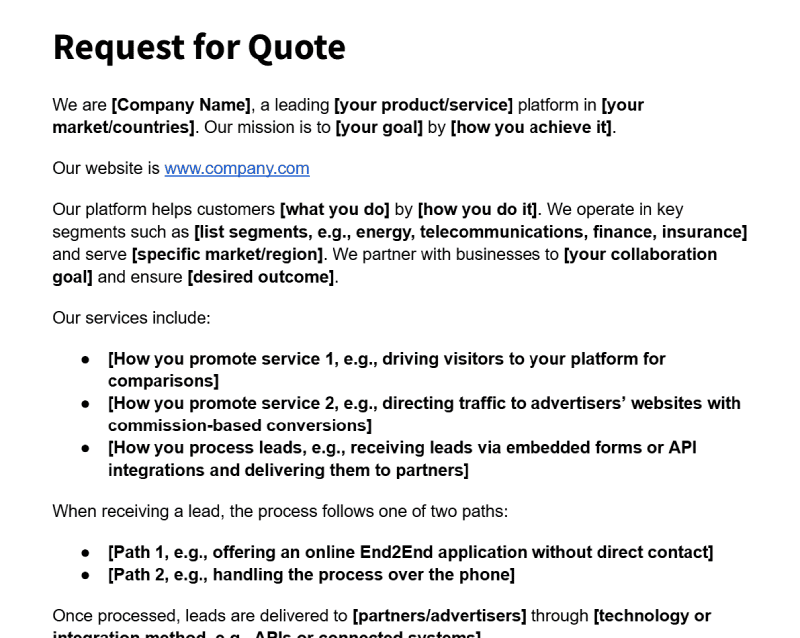Introduction
Let’s face it – nobody knows your business better than you do. But here’s the catch: the person giving you a demo probably doesn’t. They’re not living in your world. They’re likely running through a pre-made script, hitting the same talking points they’ve shared a dozen times before. That’s why this step is so important.
You need to spell out exactly what you do, what you need, and what’s non-negotiable – like you’re explaining it to a total newbie. Why? Because if they don’t get your business, they can’t show you how their platform fits. And if they can’t show you that, you’ll end up wasting time on irrelevant features and sales fluff.
In this article, we’ll walk through how to draft a no-nonsense document that lays it all out: who you are, what you’re looking for, and why it matters. This isn’t just for them – it’ll also help you get crystal clear on your priorities. This is part of a series on how to pick the right platform for your needs.
Platform Pick 1: Win Stakeholder Support
Platform Pick 2: Create a Checklist
Platform Pick 3: Create a Feature Comparison Table
Platform Pick 4: Define Your Needs Clearly
Platform Pick 5: Hunt for the Right Platform
Platform Pick 6: Send Out Requests for Proposals
Platform Pick 7: Demos with Vendors
Platform Pick 8: Check Pricing and Value
Platform Pick 9: Choose Your Top Favorites
Platform Pick 10: Business, Legal, and IT Prep
Platform Pick 11: Integrate and Test it
Platform Pick 12: Rollout
Ready? Let’s dive in.
The Affiliate Platform Guide
Everything you need to choose the right affiliate platform in one place. Download the complete guide and keep it as your handy reference.

Defining Your Business
This section is where you introduce your business in simple, clear terms. Remember, the goal is to ensure that even someone unfamiliar with your industry can understand what you do and what you need.
Who We Are
Start with a brief overview of your company and its role in the market. Focus on your core mission and the value you bring to your customers. For example:
“We are Company.com, a leading [your product] platform in [your countries]. Our mission is to [your goal] by [how you achieve it].”
What We Do
Explain your business model in a straightforward way, emphasizing how you operate and generate value. This includes the services you provide and your relationship with affiliates and advertisers. For example:
“Our platform helps customers [what you do] by [how you do it]. We partner with businesses to [your collaboration goal] and ensure [desired outcome]. Leads are managed through [your processes] and delivered to partners via [your technology or system].”
Key Goals
Highlight the business goals you aim to achieve with the affiliate platform, ensuring the vendors understand your priorities. For example:
“Our primary objective is to [your main goal], focusing on [specific focus area]. We aim to [secondary goal] while ensuring [flexibility/adaptability for specific needs].”
Stating Your Needs
Here’s where you get crystal clear about what you’re looking for in an affiliate platform. Think of it as your wishlist – but practical. The goal is to outline your needs so that even someone new to your industry can understand what you expect.
Pro tip: Write it as if you’re explaining it to someone completely unfamiliar with your business. The simpler, the better. Remember, many demo presenters will review briefly the document before the call – if it’s too complicated, you’ll waste time clarifying instead of getting answers.
Expected Volumes
Here’s where you set expectations for the vendors. Be transparent about your growth plans, so they know what they’re dealing with. This isn’t just about what you’re doing now—it’s about where you’re headed. A good platform needs to handle not just today’s traffic but tomorrow’s growth, too.
Current Volumes
Start with where you are right now. Be honest – it’s fine if your volumes aren’t huge yet.
Projected Volumes
Now for the exciting part: where you want to be. Give vendors a realistic but ambitious forecast for 1, 2, or 3 years in the future. Having these traffic milestones ready is crucial because public pricing often states something like ‘for every additional 1,000 transactions, clicks, or whatnot above the package limit, you pay X USD extra.’ Knowing your expected volumes ensures you get accurate pricing tailored to your needs.
Prefilled Example
To make things easier, we’ve prepared an example Google Document template that outlines how to structure your business overview, requirements, and expected volumes. This template ensures clarity and helps vendors understand your needs right away.

Pro TIP: If you’ve done a good job filling out the Feature Comparison Table, you can simply copy and paste the features.
Sharing the Document
Once you’ve crafted your business description and detailed your requirements, it’s time to share the document with vendors. This step ensures they fully understand your needs before any demo calls, saving time and avoiding confusion. Here’s how to do it right:
Step 1: Create a Google Document
- Why Google Docs? It’s easy to share, accessible to everyone, and allows for real-time updates (on your end). Plus, you can control access.
- How to Set It Up:
- Write your document in simple, clear language.
- Include all the key sections: Business Overview, Requirements, Expected Volumes, and any additional notes.
- Use headings and bullet points for clarity.
Step 2: Set Permissions
- Share the document as “View Only” to prevent edits or comments by vendors.
- If additional stakeholders (e.g., internal team members) need to provide input, share a separate editable version with them beforehand.
Step 3: Include a Link in Your Email
When you send your request for a demo or proposal, include the link to your Google Document. Here’s an example:
“Attached is a detailed overview of our business, requirements, and expected volumes. Please review it prior to the demo to ensure a productive discussion.”
Here’s an example template to get you started: Google Doc Example.
Step 4: Use It During the Demo
Use the document as your guide to ask questions and verify claims.
Encourage the vendor to reference the document during their demo. This helps keep the focus on how their platform meets your specific needs.
Where to next
Explore Our Guide to Choosing the Best Affiliate Platform
-

Platform Pick: How to choose the right Affiliate Platform
We know it’s not easy. Choosing the right affiliate platform can…
-

Platform Pick 1: Win Stakeholder Support
Feeling like your affiliate marketing channel needs a boost, or…
-

Platform Pick 3: Create a Feature Comparison Table
You’re here because you want the best tool for your…
-

Platform Pick 4: Defining Your Needs Clearly
Let’s face it – nobody knows your business better than…
-

Platform Pick 5: Hunt for the Right Platform
You’ve nailed down your needs and built your Feature Comparison…
-

Platform Pick 8: Check Pricing and Value
Pricing isn’t just about the numbers – it’s about understanding…
-

Platform Pick 9: Choose Your Top Favorites
You’ve done the legwork – built your Feature Table, evaluated…
-

Platform Pick 10: Business, Legal, and IT Prep
Now that you’ve narrowed down your platform choice, it’s time…
-

Platform Pick 11: Integrate and Test it
When it comes to affiliate marketing, tracking clicks and leads…
